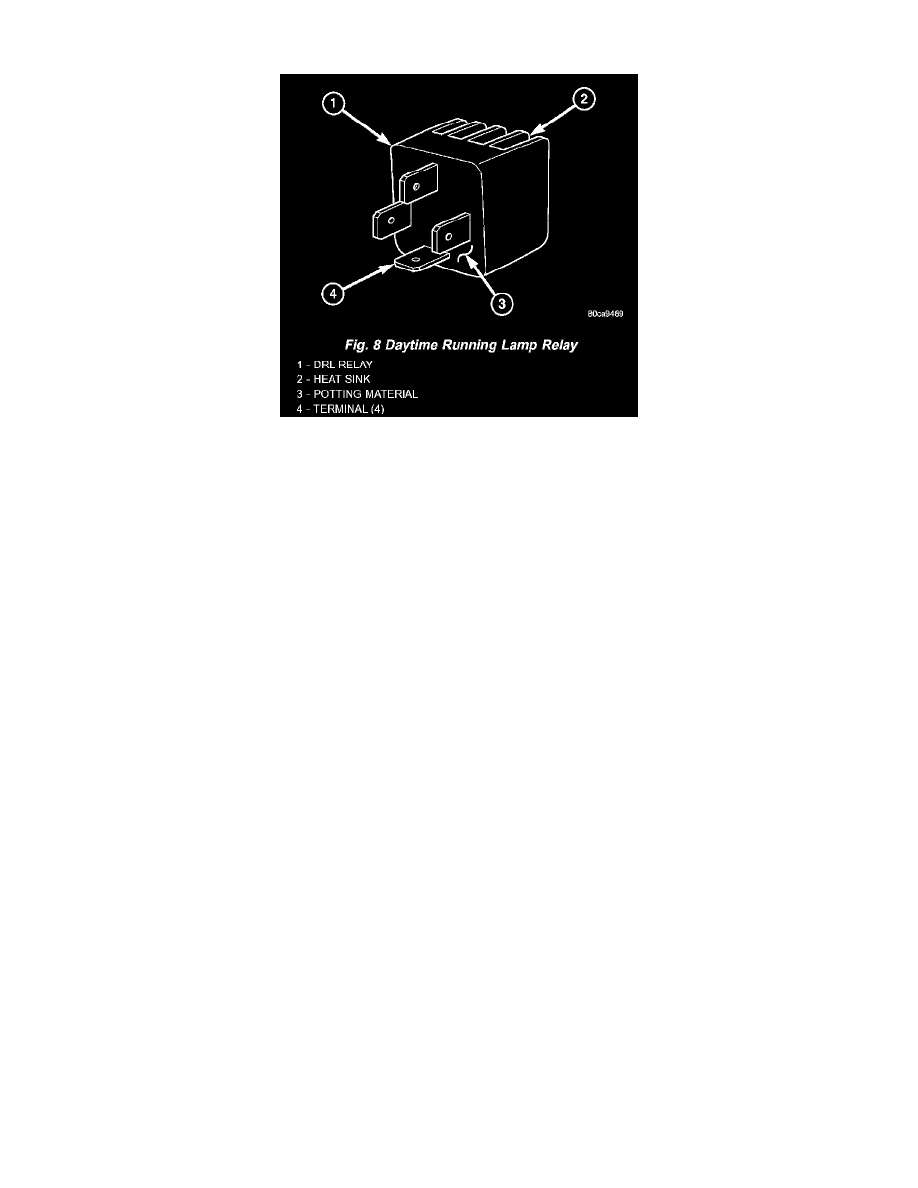Liberty Sport 4WD L4-2.4L VIN 1 (2002)

Daytime Running Lamp Relay: Description and Operation
Fig.8 Daytime Running Lamp Relay
The Daytime Running Lamp (DRL) relay is a solid state relay that is used only on vehicles manufactured for sale in Canada. The DRL relay features a
die cast aluminum housing with integral cooling fins that act as a heat sink for the solid state DRL circuitry Four male spade terminals extend from the
base of the relay through a potting material that encloses and protects the DRL circuitry Although the DRL relay has four terminals that are laid out in a
footprint that is similar to that of a conventional International Standards Organization (ISO) relay, a standard ISO relay should never be installed in place
of the DRL relay. The DRL relay is installed in the Junction Block (JB) on the driver side outboard end of the instrument panel. Vehicles equipped with
this relay do not have a headlamp high beam relay installed in the JB.
The DRL relay cannot be adjusted or repaired and, if faulty or damaged, the unit must be replaced.
The Daytime Running Lamp (DRL) relay is a solid state relay that controls the flow of battery current to the high beam filaments of both headlamp bulbs
based upon a duty cycled control input received from the Body Control Module (BCM) of vehicles equipped with the DRL feature. By cycling the DRL
relay output, the BCM controls the illumination intensity of the high beam filaments. The DRL relay terminals are connected to the vehicle electrical
system through a connector receptacle in the Junction Block (JB). The inputs and outputs of the DRL relay include:
-
Battery Current Input - The DRL relay receives battery current on a fused B(+) circuit from a fuse in the Power Distribution Center (PDC).
-
Ground Input - The DRL relay receives a path to ground through a splice block located in the instrument panel wire harness with an eyelet
terminal connector that is secured by a nut to a ground stud on the driver side instrument panel end bracket near the Junction Block (JB).
-
Control Input - The DRL relay control input is received from the BCM and/or the momentary optical horn (flash-to-pass) output of the
multi-function switch through a high beam relay control circuit.
-
Control Output - The DRL relay supplies battery current output to the headlamp high beam filaments through the high beam relay output circuit.
Because of active electronic elements within the DRL relay it cannot be tested with conventional automotive electrical test equipment. If the DRL relay
is believed to be faulty, replace the relay with a known good unit to confirm system operation.
